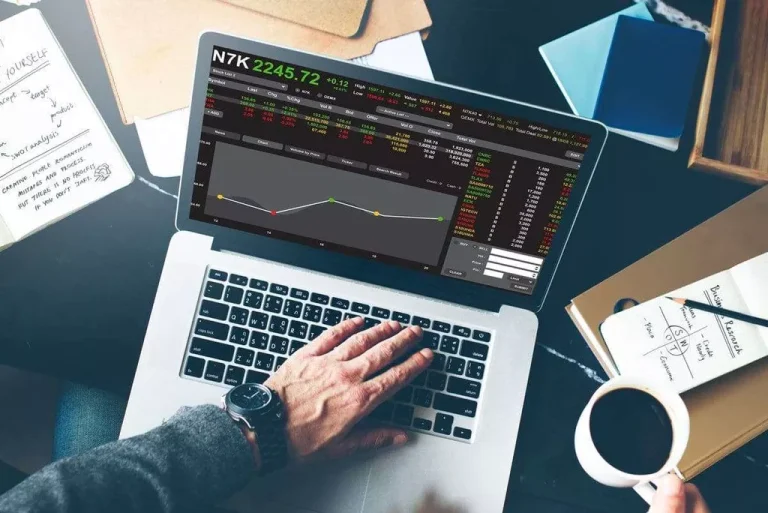Liquidit Definition, Examples, Explain , Finance
There are a quantity of ratios that measure accounting liquidity, which differ in how strictly they define liquid property. Analysts and buyers use these to determine corporations with strong liquidity. In other words, liquidity describes the diploma to which an asset may be rapidly purchased or offered available in the market at a value reflecting its intrinsic value. Cash is universally considered the most liquid asset as a outcome of it can most rapidly and easily be converted into different assets.
A non-financial example is the release of well-liked products that sell-out immediately. The firm additionally emerged from the pandemic and reported a net revenue of $2.5 billion, turning the company round from a loss in 2020. It might be argued that Disney’s financial performance in 2021 was better than in 2020. A monetary skilled will supply steerage based mostly on the data provided and supply a no-obligation name to higher understand your scenario.

This metric presents a extra stringent evaluation of an organization’s short-term liquidity, as inventories may not be as readily convertible to cash as different assets. If a market has high market liquidity, then commodities in that market could be purchased and offered at relatively steady, transparent prices. Collectable items corresponding to cash, stamps, and artwork are fairly illiquid (opposite of liquid). Owners of these items could get the true worth for the objects in the event that they store around sufficient for the proper purchaser.
Importance Of Liquidity In Monetary Planning
For example, a company could have a current ratio of three.9, a quick ratio of 1.9, and a cash ratio of zero.ninety four. All three may be thought-about wholesome by analysts and traders, relying on the corporate. In phrases of how strict the exams of liquidity are, you can view the present ratio, fast ratio, and cash ratio as simple, medium, and hard. Given the structure of the ratio, with property on high and liabilities on the bottom, ratios above 1.0 are wanted. A ratio of 1 signifies that a company can precisely pay off all its current liabilities with its current belongings.

Otherwise, an investor might need to calculate it themselves, utilizing the data reported on a company’s monetary statements or in its annual report. Securities which are traded over-the-counter (OTC), corresponding to sure advanced derivatives, are sometimes quite illiquid. Moreover, dealer charges tend to be fairly large (e.g., 5% to 7% on common for a real estate agent). Market liquidity is crucial if traders want to have the ability to get in and out of investments simply and easily with no delays. As a result, you must be certain to monitor the liquidity of a inventory, mutual fund, safety or financial market earlier than getting into a position. If you are buying and selling shares or investments after hours, there may be fewer market individuals.
What Is Monetary Liquidity?
Tangible property, corresponding to real property, nice art, and collectibles, are all relatively illiquid. Other monetary property, ranging from equities to partnership units, fall at numerous locations on the liquidity spectrum. Liquidity is important in financial markets because it ensures trades and orders can be executed appropriately. Within monetary markets, buyers and sellers are sometimes paired based on market orders and pending guide orders.
The extra financial savings an individual has the easier it is for them to pay their debts, corresponding to their mortgage, car loan, or credit card payments. This particularly rings true if the individual loses their job and quick source of new earnings. The more money they’ve available and the more liquid belongings they’ll promote for cash, the easier will probably be for them to continue to make their debt payments whereas they look for a model new job. Liquidity is necessary as a result of it exhibits how versatile an organization is in assembly its financial obligations and surprising prices. The greater their liquid property (cash savings and funding portfolio) in comparison with their money owed, the higher their financial state of affairs.
- For example, internal evaluation relating to liquidity ratios involves utilizing a quantity of accounting periods that are reported using the same accounting strategies.
- Liquidity threat arises when a company or individual is unable to purchase or promote an investment in change for money shortly enough to pay its debts.
- For instance, crypto is considered liquid, however it’s much less liquid than cash due to the time it takes to show cryptocurrency into cash.
- The liquidity of markets for different assets, corresponding to derivatives, contracts, currencies, or commodities, typically is dependent upon their dimension and what quantity of open exchanges exist for them to be traded on.
- There are a couple of kinds of liquidity that are necessary to consider whenever you make monetary choices.
A ratio larger than 1 (e.g., 2.0) would suggest that a company is prepared to satisfy its current bills. In reality, a ratio of 2.0 means that a company can cover its present liabilities two times over. A ratio of 3.zero would imply they may cover their present liabilities 3 times over, and so forth. We can see that there was a dramatic enchancment from 2009 to 2011 and then the current ratio has remained around 2.5. Firms, including Microsoft, had been making much less revenue and so had to make use of more money to pay off debts and liabilities.
The essence of liquidity risk lies within the mismatch between property and liabilities, the place the belongings cannot be easily liquidated at market value to satisfy the short-term obligations. With liquidity ratios, current liabilities are most frequently compared to liquid property to gauge the power to cowl short-term debts and obligations in case of an emergency. Analyzing liquidity helps you understand the financial health of a enterprise.
Which Of Those Is Most Essential In Your Financial Advisor To Have?
Cash could be very helpful for quick wants and bills, such as day by day spending, rent and building an emergency fund. High market liquidity means that there’s a high provide and a excessive demand for an asset and that there will at all times be sellers and buyers for that asset. If someone desires to promote an asset but there is no one to purchase it, then it cannot be liquid. Liquidity refers to the efficiency or ease with which an asset or security may be converted into ready cash without affecting its market price.
Marketable securities are ones which are simple to sell and convert into money while holding their value. Common shares and public bonds are typically the most-liquid types of securities. Investors and merchants handle liquidity threat by not leaving an extreme quantity of of their portfolios in illiquid markets. In common, high-volume merchants, particularly, want highly liquid markets, such as the foreign exchange foreign money market or commodity markets with high trading volumes like crude oil and gold. Smaller firms and rising tech won’t have the sort of volume merchants need to really feel comfortable executing a purchase order.

Liquidity is the flexibility to convert belongings into money rapidly and cheaply. The liquidity of a particular funding is necessary because it indicates the level of provide and demand of that security or asset — and how shortly it can be sold for money when needed. These names are usually lesser identified, have decrease buying and selling volume, and infrequently have lower market worth and volatility. Thus, the inventory for a big multinational financial institution will are typically more liquid than that of a small regional financial institution. In addition to buying and selling volume, different factors such as the width of bid-ask spreads, market depth, and order e-book data can present additional perception into the liquidity of a inventory.
What Is Liquidity Risk?
Volatile money flows from operations can make it difficult to service short-term liabilities. Delayed payments from clients can additional cut back incoming money circulate and pressure liquidity. For banks, liquidity danger arises naturally from sure aspects of their day-to-day operations. For example, banks tend to fund long-term loans (like mortgages) with short-term liabilities (like deposits). This maturity mismatch creates liquidity risk if depositors withdraw funds all of a sudden.
Liquidity ratios measure a company’s ability to pay debt obligations and its margin of safety via the calculation of metrics together with the present ratio, fast ratio, and operating cash move ratio. Excluding accounts receivable, in addition to inventories and different present property, it defines liquid belongings strictly as money or cash equivalents. A company or individual might run into liquidity issues if the belongings https://www.xcritical.com/ can’t be readily transformed to money. For companies which have loans to banks and creditors, a scarcity of liquidity can drive the corporate to sell belongings they don’t wish to liquidate to find a way to meet short-term obligations. Imagine a company has $1,000 available and has $500 value of inventory it expects to sell in the short-term.
So, while quantity is a vital issue to contemplate when evaluating liquidity, it should not be relied upon completely. Yarilet Perez is an experienced multimedia journalist and fact-checker with a Master of Science in Journalism. She has labored in multiple cities covering breaking information, politics, schooling, and extra. Liquidity is the measurement of short-term monetary health, while solvency is the measurement of long-term financial exit liquidity meaning crypto well being. Achieving a balanced liquidity technique is essential to navigate the complicated interplay between stability, development, and risk management within the dynamic world of finance. Moreover, sustaining a robust liquidity position safeguards financial stability throughout financial downturns, bolstering an organization’s resilience in opposition to unexpected challenges.
Cash is essentially the most liquid asset, adopted by cash equivalents, which are things like money market accounts, certificates of deposit (CDs), or time deposits. Marketable securities, similar to shares and bonds listed on exchanges, are sometimes very liquid and could be sold shortly through a broker. Accounting liquidity measures the convenience with which a person or company can meet their monetary obligations with the liquid belongings obtainable to them—the capability to pay off debts as they come due. For a company, liquidity is a measurement of how rapidly its belongings can be transformed to cash within the short-term to satisfy short-term debt obligations. Companies want to have liquid belongings in the event that they worth short-term flexibility.
Job loss or an sudden disruption of income can shortly result in an inability to satisfy bills, monetary obligations, or cover fundamental wants. Unexpected costs from medical payments, residence repairs, and so forth. can even rapidly create liquidity crunches if correct precautions are not taken. The firm’s current ratio of 0.4 signifies an inadequate degree of liquidity, with only $0.forty of current assets out there to cowl each $1 of present liabilities. The fast ratio suggests an even more dire liquidity place, with solely $0.20 of liquid property for every $1 of current liabilities. Financial liquidity refers to a business’s capacity to fulfill its short-term obligations, whereas solvency refers to a business’s capacity to repay its long-term money owed and obligations.
“Expert verified” signifies that our Financial Review Board thoroughly evaluated the article for accuracy and clarity. The Review Board comprises a panel of economic experts whose goal is to guarantee that our content material is all the time goal and balanced. If a person has extra savings than they do debt, it means they’re extra financially liquid.
Monetary Liquidity By Asset Class
Liquidity problems can probably result in insolvency if not addressed, but the two have distinct meanings. Accounting liquidity refers to a borrower’s capability to pay their money owed when they’re due. It refers to a ratio that shows current liabilities, or money owed owed, and a person’s capability to pay them over the course of a year.
Leave a comment